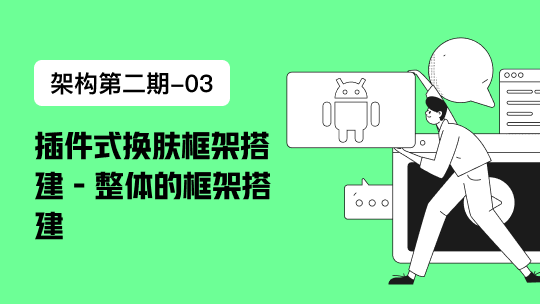理解控制器
在Angular中,一个控制器是一个javascript构造函数用于填充Angular作用域。
当一个控制器通过使用ng-controller指令附加到DOM上的时候,Angular将初始化一个新的Controller对象,使用指定的控制器构造函数。一个新的子作用域将可以作为一个参数$scope被注入到控制器构造函数。
控制器用于:
- 配置作用域对象的初始化状态
- 添加行为到作用域对象
不要将控制器用于:
- 维护DOM - 控制器应该只包含业务逻辑。放置任何的展现逻辑到控制器中将极大的影响可测试性。
- 格式化输入 - 应该使用angular表单控制器处理
- 过滤输出 - 应该使用angular过滤器处理
- 在多个控制器中共享代码或状态 - 应该使用angular service。
建立作用域对象的初始化状态
通常,当你创建一个应用你必须设置Angular作用域的初始化状态。你通过附加属性到$scope对象去设置作用域初始化状态。这些属性包括视图模型(这个模型将通过视图呈现)。作用域中的所有属性都将提供给在dom中注册了控制器的模板。
下面的例子演示了创建一个GreetingController,附加一个包含字符串'Hola!'的属性到作用域上。
var myApp = angular.module('myApp',[]);
myApp.controller('GreetingController', ['$scope', function($scope) {
$scope.greeting = 'Hola!';
}]);
我们创建一个Angular模块名称为myApp为我们的应用。然后我们添加控制器构造函数到模块,使用.controller方法。这样儿是保持控制器构造函数不放在全局作用域中。
我们使用一个行内注入标记去明确的声明Controller的依赖于Angular 提供的$scope服务。查看手册 Dependency Injection了解更多的信息。
我们附加我们的控制器到DOM使用ng-controller指令,greeting属性现在就可以数据绑定到模板了。
<div ng-controller="GreetingController">
{{ greeting }}
</div>
添加行为到作用域对象
In order to react to events or execute computation in the view we must provide behavior to the scope. We add behavior to the scope by attaching methods to the $scope object. These methods are then available to be called from the template/view.
The following example uses a Controller to add a method to the scope, which doubles a number:
var myApp = angular.module('myApp',[]); myApp.controller('DoubleController', ['$scope', function($scope) { $scope.double = function(value) { return value * 2; };
}]);
Once the Controller has been attached to the DOM, the double method can be invoked in an Angular expression in the template:
<div ng-controller="DoubleController">
Two times <input ng-model="num"> equals {{ double(num) }}
</div>
As discussed in the Concepts section of this guide, any objects (or primitives) assigned to the scope become model properties. Any methods assigned to the scope are available in the template/view, and can be invoked via angular expressions and ng event handler directives (e.g. ngClick).
Using Controllers Correctly
In general, a Controller shouldn't try to do too much. It should contain only the business logic needed for a single view.
The most common way to keep Controllers slim is by encapsulating work that doesn't belong to controllers into services and then using these services in Controllers via dependency injection. This is discussed in the Dependency Injection Services sections of this guide.
Associating Controllers with Angular Scope Objects
You can associate Controllers with scope objects implicitly via the ngController directive or $route service.
Simple Spicy Controller Example
To illustrate further how Controller components work in Angular, let's create a little app with the following components:
- A template with two buttons and a simple message
- A model consisting of a string named
spice - A Controller with two functions that set the value of
spice
The message in our template contains a binding to the spice model, which by default is set to the string "very". Depending on which button is clicked, the spice model is set to chili or jalapeño, and the message is automatically updated by data-binding.
Edit in Plunker
<div ng-controller="SpicyController">
<button ng-click="chiliSpicy()">Chili</button>
<button ng-click="jalapenoSpicy()">Jalapeño</button>
<p>The food is {{spice}} spicy!</p>
</div>
Things to notice in the example above:
- The
ng-controllerdirective is used to (implicitly) create a scope for our template, and the scope is augmented (managed) by theSpicyControllerController. SpicyControlleris just a plain JavaScript function. As an (optional) naming convention the name starts with capital letter and ends with "Controller".- Assigning a property to
$scopecreates or updates the model. - Controller methods can be created through direct assignment to scope (see the
chiliSpicymethod) - The Controller methods and properties are available in the template (for the
<div>element and its children).
Spicy Arguments Example
Controller methods can also take arguments, as demonstrated in the following variation of the previous example.
Edit in Plunker
<div ng-controller="SpicyController">
<input ng-model="customSpice">
<button ng-click="spicy('chili')">Chili</button>
<button ng-click="spicy(customSpice)">Custom spice</button>
<p>The food is {{spice}} spicy!</p>
</div>
Notice that the SpicyController Controller now defines just one method called spicy, which takes one argument called spice. The template then refers to this Controller method and passes in a string constant 'chili' in the binding for the first button and a model property customSpice (bound to an input box) in the second button.
Scope Inheritance Example
It is common to attach Controllers at different levels of the DOM hierarchy. Since the ng-controller directive creates a new child scope, we get a hierarchy of scopes that inherit from each other. The $scope that each Controller receives will have access to properties and methods defined by Controllers higher up the hierarchy. See Understanding Scopes for more information about scope inheritance.
Edit in Plunker
<div class="spicy">
<div ng-controller="MainController">
<p>Good {{timeOfDay}}, {{name}}!</p>
<div ng-controller="ChildController">
<p>Good {{timeOfDay}}, {{name}}!</p>
<div ng-controller="GrandChildController">
<p>Good {{timeOfDay}}, {{name}}!</p>
</div>
</div>
</div>
</div>
Notice how we nested three ng-controller directives in our template. This will result in four scopes being created for our view:
- The root scope
- The
MainControllerscope, which containstimeOfDayandnameproperties - The
ChildControllerscope, which inherits thetimeOfDayproperty but overrides (hides) thenameproperty from the previous - The
GrandChildControllerscope, which overrides (hides) both thetimeOfDayproperty defined inMainControllerand thenameproperty defined inChildController
Inheritance works with methods in the same way as it does with properties. So in our previous examples, all of the properties could be replaced with methods that return string values.
Testing Controllers
Although there are many ways to test a Controller, one of the best conventions, shown below, involves injecting the $rootScope and$controller:
Controller Definition:
var myApp = angular.module('myApp',[]); myApp.controller('MyController', function($scope) { $scope.spices = [{"name":"pasilla", "spiciness":"mild"},
{"name":"jalapeno", "spiciness":"hot hot hot!"},
{"name":"habanero", "spiciness":"LAVA HOT!!"}]; $scope.spice = "habanero";
});
Controller Test:
describe('myController function', function() { describe('myController', function() {
var $scope; beforeEach(module('myApp')); beforeEach(inject(function($rootScope, $controller) { $scope = $rootScope.$new(); $controller('MyController', {$scope: $scope});
})); it('should create "spices" model with 3 spices', function() { expect($scope.spices.length).toBe(3);
}); it('should set the default value of spice', function() { expect($scope.spice).toBe('habanero');
});
});
});
If you need to test a nested Controller you need to create the same scope hierarchy in your test that exists in the DOM:
describe('state', function() {
var mainScope, childScope, grandChildScope; beforeEach(module('myApp')); beforeEach(inject(function($rootScope, $controller) { mainScope = $rootScope.$new(); $controller('MainController', {$scope: mainScope}); childScope = mainScope.$new(); $controller('ChildController', {$scope: childScope}); grandChildScope = childScope.$new(); $controller('GrandChildController', {$scope: grandChildScope});
})); it('should have over and selected', function() { expect(mainScope.timeOfDay).toBe('morning'); expect(mainScope.name).toBe('Nikki'); expect(childScope.timeOfDay).toBe('morning'); expect(childScope.name).toBe('Mattie'); expect(grandChildScope.timeOfDay).toBe('evening'); expect(grandChildScope.name).toBe('Gingerbread Baby');
});
});
tips:
本文由wp2Blog导入,原文链接:http://devonios.com/3%e3%80%81angular-js-%e5%ad%a6%e4%b9%a0%e7%ac%94%e8%ae%b0-controllers.html















